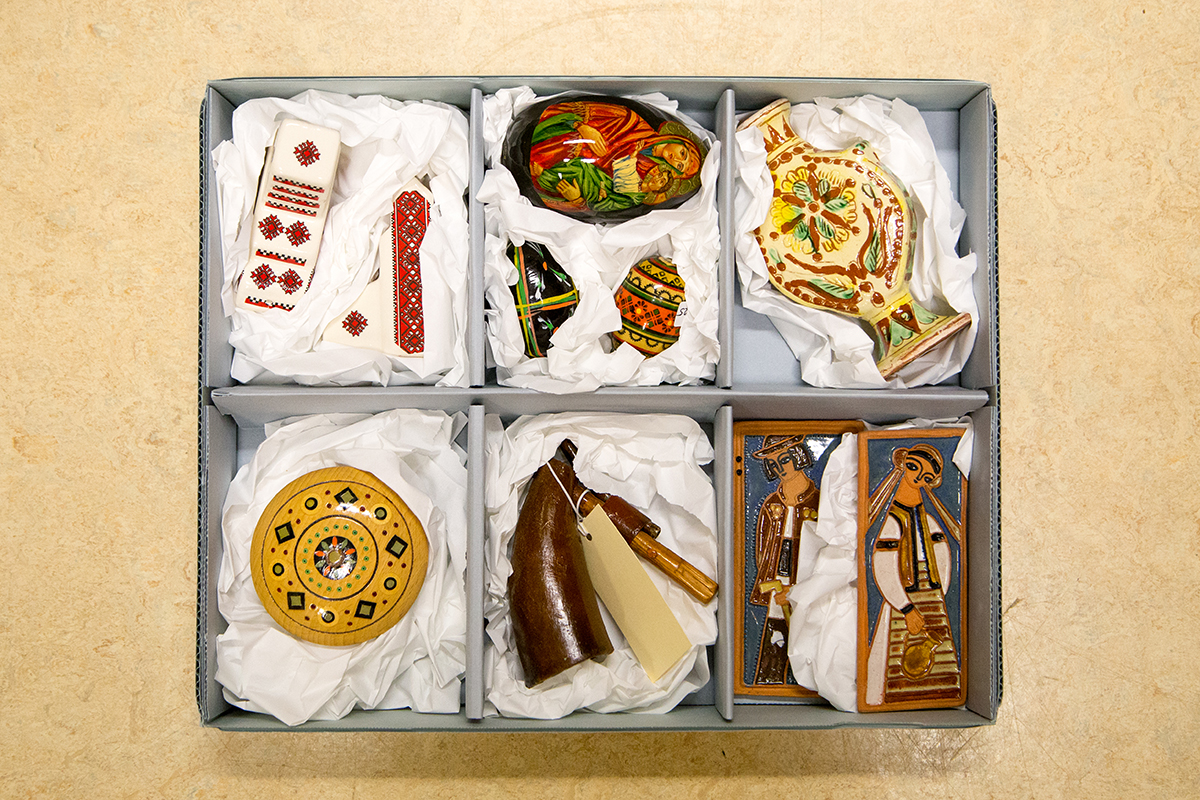Neato things in neato museums: Bohdan Medwidsky Ukrainian Folklore Archives
 Joshua Storie
Joshua Storie“Folklore” doesn’t include just fairy tales. It includes the lived experiences of small groups, rather than elite culture or pop culture. Folklorists studying the Ukrainian past concentrate on peasant life. When these scholars need materials to study, they can go to the largest North American collection of Ukrainian and Canadian-Ukrainian folklore material tucked away in the Old Arts Building.
Founded in 1977 as a collection of fieldwork by folklore students, the Bohdan Medwidsky Ukrainian Folklore Archives keeps things relating to Ukrainian life, like musical instruments, embroidery, old family photos, maps, journals, advertisements, and other artifacts.
The U of A’s Faculty Club celebrated Malanka, the Ukrainian New Year’s folk holiday, between 1973 and 1993. Students would dress as masked, traditional characters: the female hero, Malanka; her suitor, Vasyl; a priest; a devil; a bear; and many others. Those in costume would use their anonymity to satirize politicians —
and professors.
Folklorist Bohdan Medwidsky began sending students to do Ukrainian folklore fieldwork in the 70s, which largely involved recording interviews. Today, scholars still use this 20th century data, but it’s locked away in in now-archaic storage like cassette tapes, floppy discs, and CDs. To solve this problem, the collection keeps now-archaic platforms, like old Windows computers.
The collection stores thousands of Ukrainian sheet music songs. These particular pieces were handwritten by an Orthodox priest in Montreal who arrived there between the first and the second world war. He was also a choir conductor, and committed a lot of time to writing out choir music that was later donated to the U of A.
The first Ukrainian dancers began to appear on Canadian television in the 60s. While it’s unclear if this group was the very first (CBC used to tape over the previous day’s footage without archiving any of it, so exact data is unavailable), it was definitely close.
Okay, these dolls are part of a Russian tradition, not Ukrainian, but they contain the tiniest Joseph Stalin you’ll ever see. They were made post-independence to mock Soviet leaders. And rightfully so; Ukrainians endured about 70 years of communist rule — two of which (1932-33) were spent in an Stalin-induced famine that killed millions.
The collection keeps a number of clothing items. Traditional shirts include one that was modified with a sugar sack after someone deemed the top half fully functional when the bottom wore out. Other contemporary pieces are more 20th century, like a Warhol-esque graphic tee depicting “Campbell’s Borscht.”




